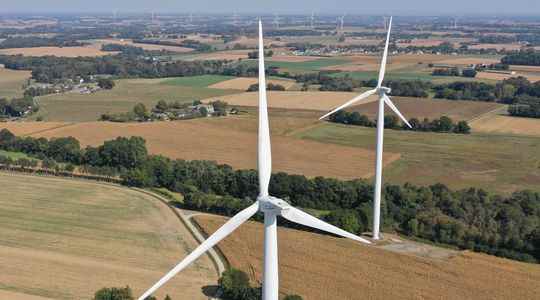This is grain to grind for the detractors of theenergywende. Using databases on weather conditions, the Swiss newspaper Neue Zuricher Zeitung was able to estimate the “load factor” of 18,000 wind turbines located in Germany. This ratio between the energy produced and that which could have been if the devices were operating at full power is puzzling: it is less than 10% in 25% of cases! Still according to this work, only 15% of the wind turbines analyzed have a load factor exceeding 30%. The vast majority of these are infrastructures located in the far north of the country, where the wind conditions are the best. In the south of the country, on the other hand, wind turbines have to deal with more unfavorable weather conditions while electricity needs are higher in this area, notes the study.
Some will no doubt see it as a fiasco of German energy policy. However, it would be too simple to conclude that wind power is bankrupt on the basis of these figures, insist several specialists. First point, “a load factor of less than 30% is in no way prohibitive, says Anna Créti, professor of economics at the University of Paris Dauphine-PSL, scientific director of the chair of natural gas and chair in climate economics. When a wind turbine produces, it is as much electricity as is subtracted from fossil production”. And the scientist recalls the load factor of other energy sources: 55% for coal, and less than 30% for hydraulics over the recent period due to the drought. “Here too we have a figure lower than 30%, so what do we do? Are we questioning the hydraulics?”
Of course, that would be a mistake. “Especially since in 2021, wind power produced 450 terawatt hours at European level, the equivalent of French electricity production”, recalls Anna Créti. A much more flattering figure than those published by the Zurich media. Critics of wind energy quickly forget that we need this energy source. “Look at the scenarios adopted by RTE for 2050. In all cases, it will be necessary to work harder on onshore wind turbines and massively develop offshore wind power”, recalls Guillaume Denis, electrical system expert and co- leader of the energy group of the Le Lierre network. And this even if nuclear power is on the rise. “New power plant projects have been announced, but in the best of cases, they will not be operational for about fifteen years”, specifies the specialist. “Impossible to wait so long”, confirms Anna Créti.
A source of revenue for the state
Especially since in these times of soaring energy prices, wind turbines no longer constitute a burden for the State. According to estimates by the Energy Regulatory Commission (CRE), they will bring in 7.6 billion euros in revenue for 2022 and 2023 because if France subsidizes operators when the market price is lower than a guaranteed, conversely, operators must pay back a sum to the State when the market price exceeds the guaranteed price.
In the future, new financial support may be needed. However, they would undoubtedly remain reasonable, says Anna Créti, who co-directed research work on the subject. Thus, “the cost of the support mechanisms over a period of 15 years would be between 3.8 and 11.5 billion euros per year in France. Germany, for its part, would pay between 15.5 and 26, 5 billion euros per year and Denmark between 1.2 and 3.3 billion euros, depending on the scenario envisaged and the level of wind energy penetration.
“Today, we are faced with a mature and competitive technology. The brakes are more of a political order, notes Guillaume Denis. For obvious reasons, we cannot reasonably concentrate all the infrastructures in the north of the territory. Similarly , wind turbines cannot be installed too far offshore. It would cost too much”. It will therefore be necessary to find a way to distribute the equipment on the territory. An explosive record, as wind turbines tend to get taller and taller to capture more wind and achieve a higher load factor.
“Finally, these wind turbines which will be installed over the next few years reflect our energy appetites. It is interesting, for an awareness, to visualize the consequences on the ground”, estimates Guillaume Denis. It remains to be seen how many French people will be sensitive to this philosophical argument.
